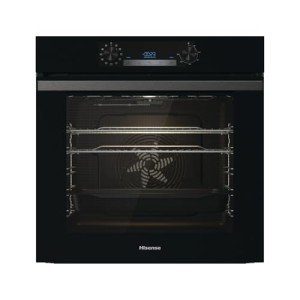20 Trailblazers Lead The Way In Built-In Range Oven
Understanding Built-in Range Ovens: A Comprehensive Guide
Built-in range ovens have become a staple in contemporary kitchen areas, providing a smooth blend of functionality and design. These appliances not just enhance the visual appeal of any kitchen space but also augment cooking effectiveness. Built In oven and hob packages with installation will explore the different aspects of built-in range ovens, including their functions, types, benefits, installation factors to consider, and maintenance ideas.
What is a Built-in Range Oven?
A built-in range oven is a home appliance that integrates a stove and an oven into a single unit developed to be integrated into the kitchen cabinets. Unlike standalone ovens, built-in ranges are created to supply a more customized appearance and frequently featured a variety of functions that deal with both amateur cooks and skilled chefs. These systems can be powered by gas or electrical power, with each type providing different benefits.
Features of Built-in Range Ovens
Built-in range ovens come with a plethora of functions that add to their appeal. A few of these consist of:
- Self-Cleaning Options: Many built-in ovens come equipped with self-cleaning cycles, making maintenance much easier.
- Smart Technology: Features like Wi-Fi connectivity and app-controlled cooking programs allow users to manage their ovens from their mobile phones.
- Convection Cooking: Many built-in ovens have convection fans that circulate hot air for constant and even baking.
- Several Cooking Modes: Options such as steam cooking, broiling, and traditional baking provide versatility in cooking techniques.
Kinds Of Built-in Range Ovens
When it pertains to built-in range ovens, there are two primary types: gas and electric. Below is a contrast of their key features:
Feature
Gas Range Oven
Electric Range Oven
Heating Method
Flames produced by burning gas
Electric heating aspects
Temperature level Control
Immediate heat control
Consistent and steady heat
Installation
Requires gas line
Needs electrical outlet
Maintenance
Can be more challenging to clean
Normally simpler to clean up
Cooktop Performance
High heat for quick searing
Even heating for baking
Advantages of Built-in Range Ovens
Built-in range ovens provide a number of advantages, making them a desired choice for many house owners. These advantages consist of:
- Space Efficiency: Built-in designs maximize counter space, making kitchen designs more effective.
- Visual Appeal: They provide a customized, professional aim to the kitchen, incorporating perfectly with cabinets and countertops.
- Increased Property Value: High-quality built-in appliances can enhance the value of a home.
- Boosted Cooking Experience: Features such as convection cooking and clever technology make cooking more enjoyable and efficient.
- Energy Efficiency: Modern built-in ovens typically utilize energy-saving technologies which reduce power usage.
Installation Considerations
Proper installation is crucial for built-in range ovens. Here are some crucial elements to consider:
- Space Requirements: Measure the offered space in the kitchen to ensure that the built-in oven fits flawlessly within kitchen cabinetry.
- Electrical/Gas Connections: Ensure that the proper connections are available. For gas ovens, a gas line ought to be available; for electric ovens, a devoted circuit is required.
- Ventilation: Adequate ventilation is critical, particularly for gas designs, to prevent the buildup of harmful gases.
- Expert Installation: It is advisable to have actually the oven installed by an expert to adhere to security requirements and maker guidelines.
Upkeep Tips
Keeping a built-in range oven is important for its durability and performance. Here are some pointers to keep your appliance in top condition:
- Regular Cleaning: Clean spills and spots instantly to prevent them from becoming tough-to-remove residues.
- Self-Clean Cycle: Utilize the self-clean feature frequently to maintain the interior.
- Check Seals: Inspect door seals to ensure they are airtight and replace them if essential.
- Expert Servicing: Schedule regular upkeep checks with certified technicians to make sure ideal performance.
FAQs
What sizes do built-in range ovens been available in?
Built-in range ovens usually can be found in standard widths of 24, 30, and 36 inches. It is essential to determine your kitchen space to choose the appropriate size.
Are built-in range ovens more costly than freestanding models?
Yes, built-in range ovens tend to be more costly due to their custom-made design and setup requirements. Nevertheless, their advantages often justify the investment.
Can I install a built-in range oven myself?
While it is possible for skilled DIY-ers, it is generally recommended to work with a professional for correct installation and safety compliance.
How do I choose between a gas and electric built-in range oven?
Picking between gas and electric largely depends upon personal cooking choices and the existing infrastructure of your kitchen. Gas cooktops offer immediate heat control, while electric cooktops supply even heating up.
Are built-in range ovens energy-efficient?
Numerous contemporary built-in range ovens are designed with energy-saving features, making them efficient options for the environmentally mindful customer.
Built-in range ovens present a captivating mix of functionality, convenience, and design. Their capability to elegantly incorporate within kitchen design makes them an attractive option for homeowners looking to enhance their culinary experience. By understanding their functions, benefits, and upkeep needs, consumers can make informed decisions when buying this essential kitchen home appliance. Planning for correct setup and regular upkeep will make sure that your built-in range oven serves you well for several years to come.
